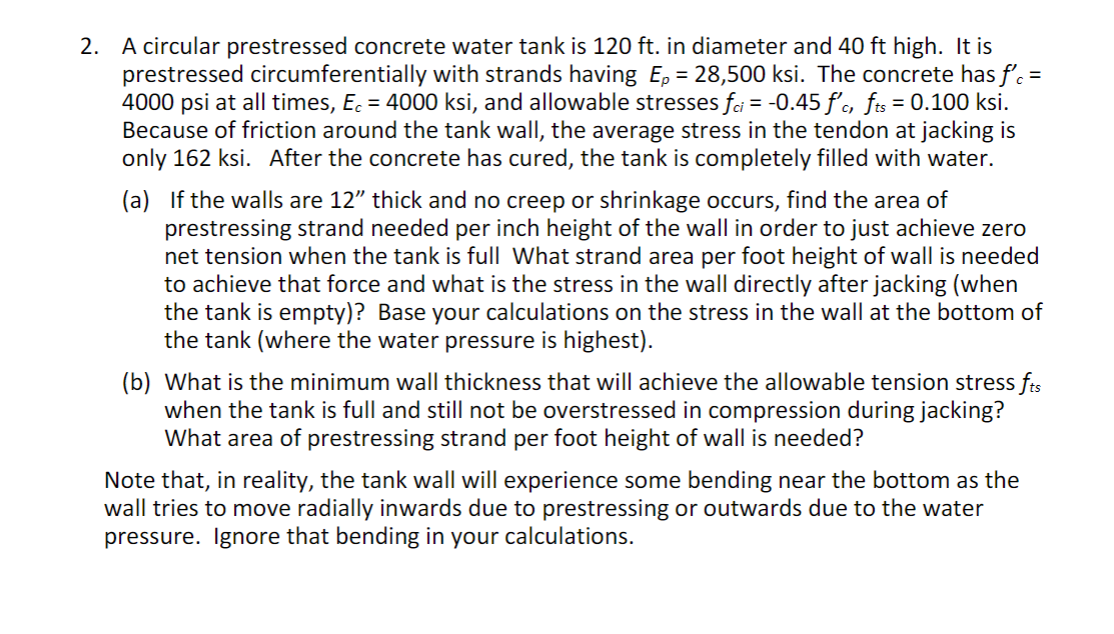Home /
Expert Answers /
Civil Engineering /
2-a-circular-prestressed-concrete-water-tank-is-120-mathrm-ft-in-diameter-and-40-mat-pa864
(Solved): 2. A circular prestressed concrete water tank is \( 120 \mathrm{ft} \). in diameter and \( 40 \mat ...
2. A circular prestressed concrete water tank is \( 120 \mathrm{ft} \). in diameter and \( 40 \mathrm{ft} \) high. It is prestressed circumferentially with strands having \( E_{p}=28,500 \mathrm{ksi} \). The concrete has \( f_{c}^{\prime}= \) 4000 psi at all times, \( E_{c}=4000 \mathrm{ksi} \), and allowable stresses \( f_{c i}=-0.45 f_{c}^{\prime}, f_{t s}=0.100 \mathrm{ksi} \). Because of friction around the tank wall, the average stress in the tendon at jacking is only 162 ksi. After the concrete has cured, the tank is completely filled with water. (a) If the walls are \( 12^{\prime \prime} \) thick and no creep or shrinkage occurs, find the area of prestressing strand needed per inch height of the wall in order to just achieve zero net tension when the tank is full What strand area per foot height of wall is needed to achieve that force and what is the stress in the wall directly after jacking (when the tank is empty)? Base your calculations on the stress in the wall at the bottom of the tank (where the water pressure is highest). (b) What is the minimum wall thickness that will achieve the allowable tension stress \( f_{t s} \) when the tank is full and still not be overstressed in compression during jacking? What area of prestressing strand per foot height of wall is needed? Note that, in reality, the tank wall will experience some bending near the bottom as the wall tries to move radially inwards due to prestressing or outwards due to the water pressure. Ignore that bending in your calculations.
Expert Answer
a) To achieve zero net tension when the tank is full, the prestressing force must be equal to the force due to water pressure. The water pressure at t
